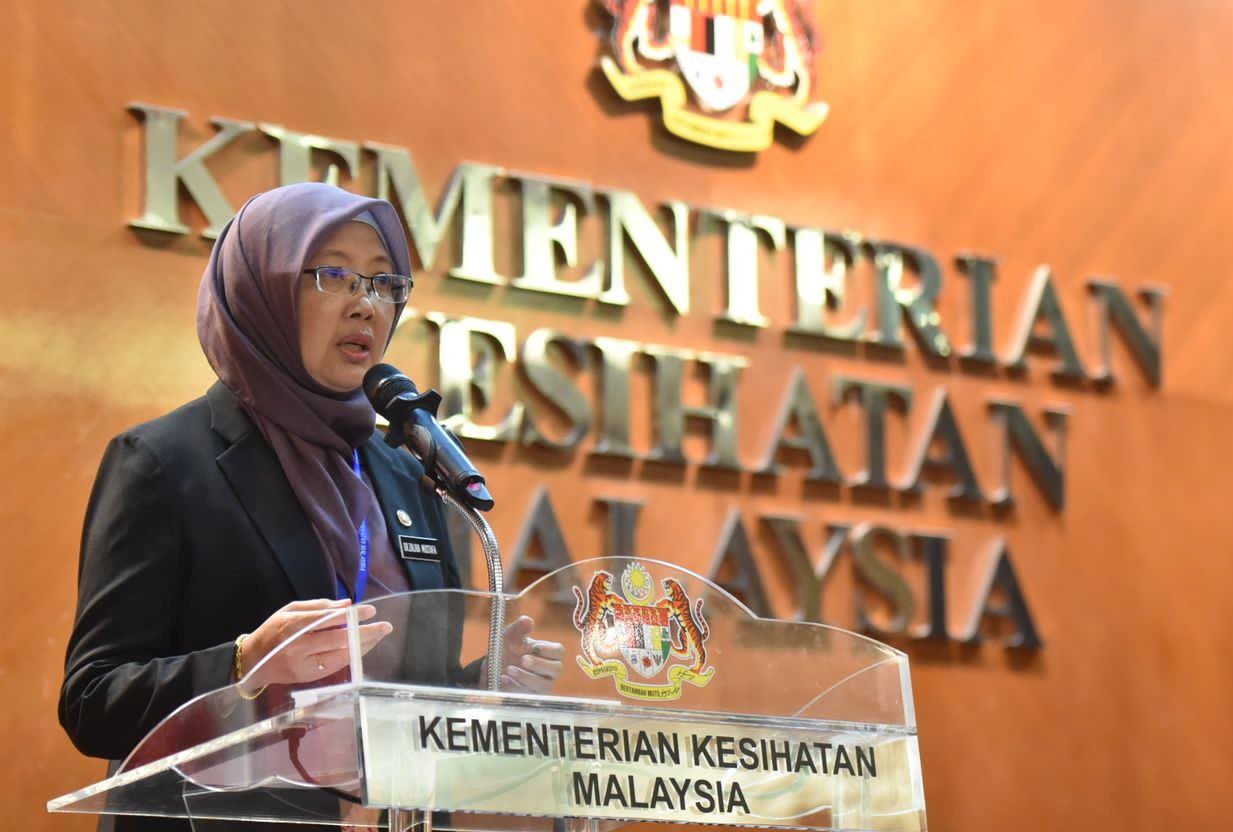KUALA LUMPUR, Jan 23 – Health Minister Dr Zaliha Mustafa announced yesterday an action plan with seven proposals to reduce overcrowding in emergency departments across public hospitals in the country.
She said the number of outpatient arrivals at emergency departments (ED) in Ministry of Health (MOH) hospitals at the end of 2022 were estimated to be nearly as high as pre-pandemic years that saw about eight million arrivals annually.
However, the health minister did not provide specific figures, including whether Red Zone arrivals of critically ill patients in 2022 exceeded the years before the Covid-19 pandemic hit in 2020, such as in Raja Permaisuri Bainun Hospital (HRPB) in Ipoh, Perak.
CodeBlue previously reported that the Ipoh general hospital received 14,109 Red Zone outpatient arrivals from January to November 2022, a whopping 73 per cent higher than the 8,168 arrivals in 2019 in the same period.
“It is not denied that the daily increase of patients and various deficiencies, including in human resources and facilities, have caused this congestion issue,” Dr Zaliha said in a statement.
“This issue must be handled comprehensively, which is beyond the scope of the Emergency Department. Short-term, medium-term, and long-term solutions must be immediately drafted with all stakeholders for the good of the people and the country’s health sector.”
- Review Effectiveness of Extended Hours At Certain Facilities
Dr Zaliha said she has requested the medical, public health, and the research and technical support programmes to review and analyse data at hospitals and public health clinics to review the effectiveness of certain initiatives, like extended hours at certain facilities.
The health minister’s previous proposal to extend hours at klinik kesihatan, which typically operate only during business hours on workdays, to decongest EDs had sparked anger among public health clinic staff, including family medicine specialists, who say that they are already overworked.
- Expand Lean Health Care System
Dr Zaliha highlighted increased efforts to expand a lean health care system, especially in hospitals with overcrowded EDs.
According to a December 2014 presentation by MOH’s medical development division, lean health care aims to eliminate waste in processes in health care facilities and to create value for patients. The focus of lean health care initiatives in MOH facilities is to reduce congestion and waiting time.
Among MOH hospitals, lean health care was first introduced at Sultan Ismail Hospital in Johor in October 2013. It is unclear how many public hospitals the lean health care system has been expanded to since.
- Expand Short-Stay Wards
Dr Zaliha suggested improving the criteria for short-stay wards – which are already implemented in a few hospitals – to avoid long waits, especially in the Yellow Zone (Semi-Critical Zone).
“For hospitals with the space, short-stay wards will be introduced.”
- Improve Bed Management System
The health minister said MOH would continue to improve the bed management system in public hospitals to better manage bed occupancy.
- Public-Private Partnerships, Including With GPs
Dr Zaliha said MOH would continue to look at partnership models with government agencies, state governments, non-governmental organisations (NGOs), and also the private sector in resolving overcrowding in emergency departments.
She cited previous public-private partnerships (PPP) during the Covid-19 pandemic. The pandemic saw private general practitioners (GPs) administering nearly half of jabs during the National Covid-19 Immunisation Programme (PICK), while about 15,000 non-Covid cases were estimated to have been outsourced to private hospitals by end 2021.
“Such models will be looked at more in-depth, including working with private general practitioners. Such an initiative requires special funding,” Dr Zaliha said.
The Malaysian Medical Association (MMA) has repeatedly urged MOH to decant primary care patients to private GPs for non-communicable disease (NCD) management, but complained that it had only received a “lukewarm” response from MOH.
The Association of Private Hospitals Malaysia (APHM) said last month that private hospitals will not be able to help public hospitals, as emergency rooms are full even in private hospitals due to a dire shortage of nurses that prevents beds from being opened up, even when private hospitals have the infrastructure.
- Upgrade ICT
Dr Zaliha said MOH was committed to upgrading the current ICT (information and communications technology) system into a digital system with the potential to help resolve existing problems.
“Many digital solutions and interventions in health services have been introduced in other countries. Malaysia should hold the same aspirations for a more efficient health service.”
MOH has been working on a Malaysian Health Data Warehouse (MyHDW) project since more than a decade ago in 2010. According to a fact sheet by Mimos Bhd, an R&D centre under the Ministry of Science, Technology and Innovation (Mosti), MyHDW is meant to be a single source combining health care data from public and private hospitals and clinics.
- Work With JPA and MOF for more staff
Dr Zaliha acknowledged the need to increase human resources in the public health care sector, including doctors, nurses, medical assistants, pharmacists, allied science professionals, and other allied health staff.
“MOH will work with the Public Service Department (JPA) and the Ministry of Finance (MOF) to find a middle ground to resolve this issue in the medium and long term.”
Medical experts recently raised issues of medical brain drain among Malaysian doctors and nurses leaving for work in other countries, amid multiple complaints from government doctors on social media about being overworked and underpaid.
Contract pharmacists in the public sector recently began organising in the profession, starting a Twitter account @HFarmasiKontrak and telling the media that the Hartal Farmasi Kontrak movement would stage a walkout from work if contract pharmacists do not receive permanent positions.
The Hartal Doktor Kontrak movement previously launched a day-long strike at several public hospitals nationwide in July 2021.








